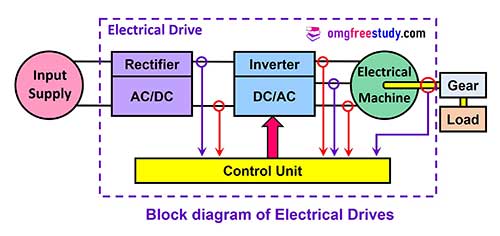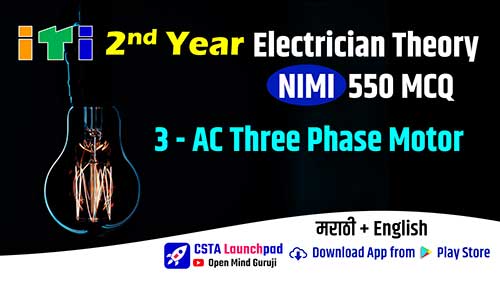Electrical drives is an electromechanical device which converting electrical energy into mechanical energy. And it feed motion to different machines mechanisms for various kinds of controlling process.
In large number of industrial and domestic applications motion control is required like rolling mills, paper machines, textile mills, machine tools, fans, pumps, robots, washing machines and much more.
The basic block diagram of Electrical drive as shown in figure.

In other word the Systems which employed for motion control are called as Drives. And it may be employ any of prime movers such as diesel or petrol engines, gas or steam turbines, engines, hydraulic and electric motors etc.
When Supplying mechanical energy for motion control drives employing electric motors are known as Electrical drives.
Table of Contents
ToggleClassification of electric drives
Electrical drives can be classified by following criteria’s
According to mode of operation Electrical Drives
- Continuous duty drives
- Short time duty drives
- Intermittent duty drives
According to means of control
- Manual
- Semi-automatic
- Automatic
According to number of machines
- Individual drive
- Group drive
- Multi – motor drive
According to dynamics and transients
- Uncontrolled transient period
- Controlled transient period
According to methods of speed control Electrical Drives
- Uncontrolled constant speed reversible and non – reversible
- Step speed control Reversible and non – reversible
- Variable position control
- Smooth speed control Reversible and non – reversible
Advantage of Electrical Drives
- They have flexible control operation.
- In drives automatic fault detection systems can be provided.
- PLC (Programmable logic controller) and computers can be employed for automatic operation in a desired sequence.
- They are available in wide range variation of torque, speed and power.
- It is almost suitable for any operating conditions such as explosive and radioactive environments.
- It can operate in all the four quadrants of speed – torque mode of operation.
- Drives can be started instantly and can immediately be fully loaded.
- Control gear requirement for speed control, is usually simple and easy to operate for starting and braking.
Selection of electrical drives
- Choice of an electric drive depends on the following important factors are,
- Nature of speed regulation, speed range, efficiency, duty cycle, quadrants of operation, speed fluctuations, speed torque characteristics and rating etc.
- Transient operation requirements as Values of acceleration and deceleration, starting, braking and reversing performance.
- Types of source and its capacity, magnitude of voltage, fluctuations, power factor, harmonics and their effect on other loads etc.
- Space and weight restriction if any.
- Environment and location.
- Reliability.
Download MCQ PDF of Module 9 AC/DC motor drive
Following Topics Cover in MCQ PDF
- AC/DC motor drives
- Speed control of 3 phase induction motor by VVVF/AC drive
This MCQ Question is Taken From Bharat skill Website Published By NIMI
Objective questions on the above topic explain in the video on YouTube.


Nice post. I used to be checking constantly this blog and I am impressed!
Extremely helpful information specifically the final section 🙂 I handle such
information a lot. I used to be seeking this certain info for a long time.
Thank you and best of luck.
Having read this I thought it was extremely informative.
I appreciate you finding the time and energy to
put this information together. I once again find myself personally spending way too much
time both reading and commenting. But so what, it was still worthwhile!